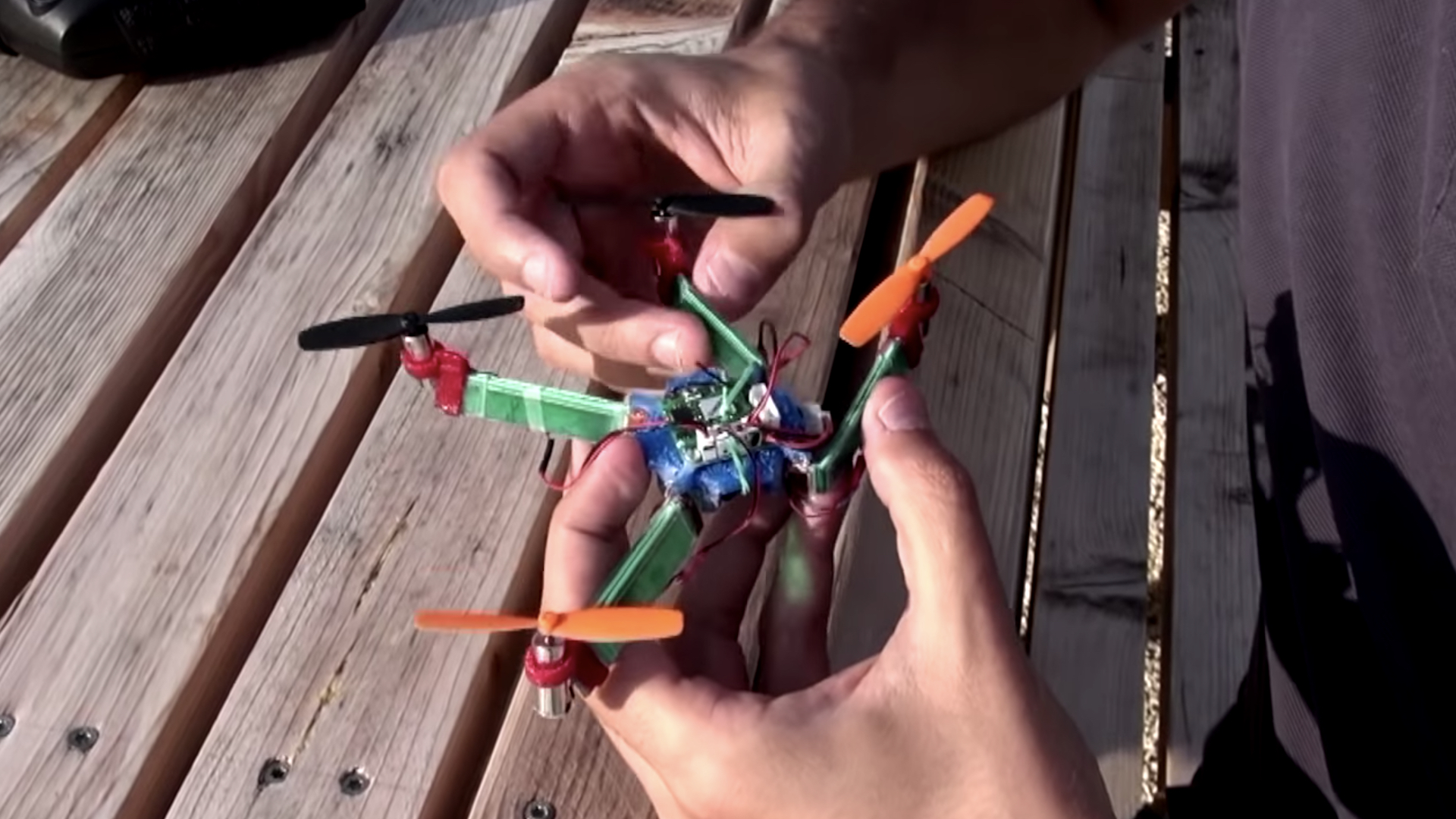

For researchers at the École Polytechnique Fédérale de Lausanne (EPFL), it seems as though evolution and inevitability were the two primary factors in developing the latest bio and origami-inspired drone, which has insect wings on its mind as a means to reduce damage from arguably unavoidable collisions.
We’ve seen biomimetic drones which take their inspiration from various animals and their evolutionarily refined designs, result in some fairly impressive engineering before. From the bionic bird, which can actually hide among its real counterpart, to the SpiderMAV, which can shoot polystyrene threads to stabilize itself against structures: inspiration is found all around us, and EPFL’s scientist seem to have focused on the multifunctional design of insect wings for their latest UAV project.
According to New Atlas, EPFL’s Laboratory of Intelligent Systems has developed a drone that collapses its frames to lessen impact damage in case of a crash. While one can reasonably argue origami’s creative folding techniques are at the forefront here, the drone’s collapsable frame design derives equally as directly from an insect’s firm wings and flexible joints. Admittedly, there’s more of a focus on obstacle submission rather than obstacle avoidance, as this drone’s entire ethos is that collision is inevitable, but damage management isn’t impossible.
“The current trend in robotics is to create ‘softer’ robots that can adapt to a given function and operate safely alongside humans,” said the head of EPFL’s Laboratory of Intelligent Systems, Dario Floreano. “But some applications also require a certain level of rigidity. With our system, we have shown that you can strike the right balance between the two.”
This balance most directly refers to the drone’s arms, which are encased in a soft, elastic material, with firm plates within. During flight, these arms are rigid and provide the required physics to allow for operational flight. When a certain amount of force hits them, however, the crossed threshold results in the inner plates breaking apart, allowing the arms to bend. This leaves vital electronics and battery components intact, with only a manual refolding required to properly resume flight.
Let’s take a closer look, shall we?

“When we make a drone, we can give it specific mechanical properties,” said Stefano Mintchev, lead author of EPFL’s study. “This includes, for example, defining the moment at which the structure switches from stiff to flexible.” As you can see from the footage above, the stretched membrane found within snaps once the plates holding it collapse from an impact.
As Floreano explains, a certain amount of rigidity in robots is necessary, whether to capably sustain their own physical weight or an additional payload’s. For a UAV of this size, it seems like EPFL’s scientists have managed to strike the right balance between the soft and compliant end of the spectrum, and the durable fortitude of the other.